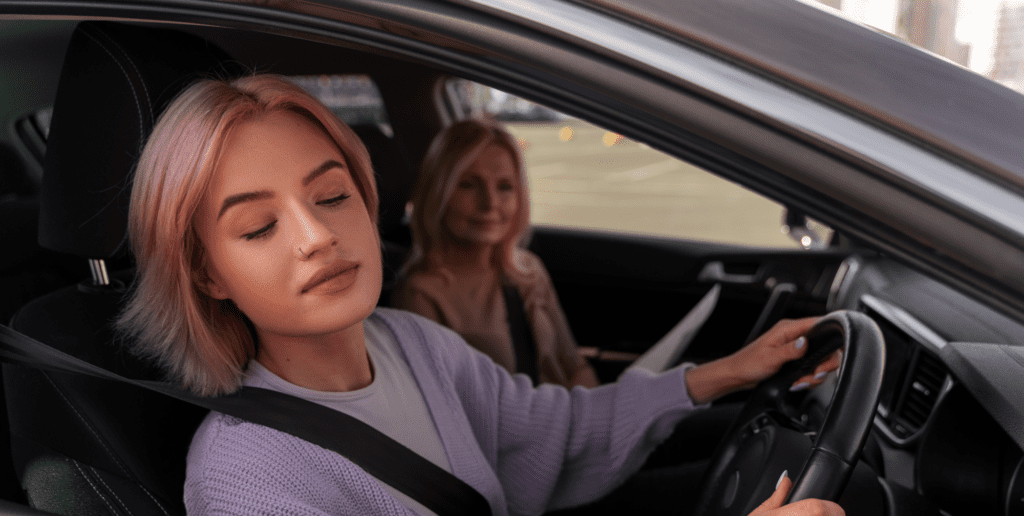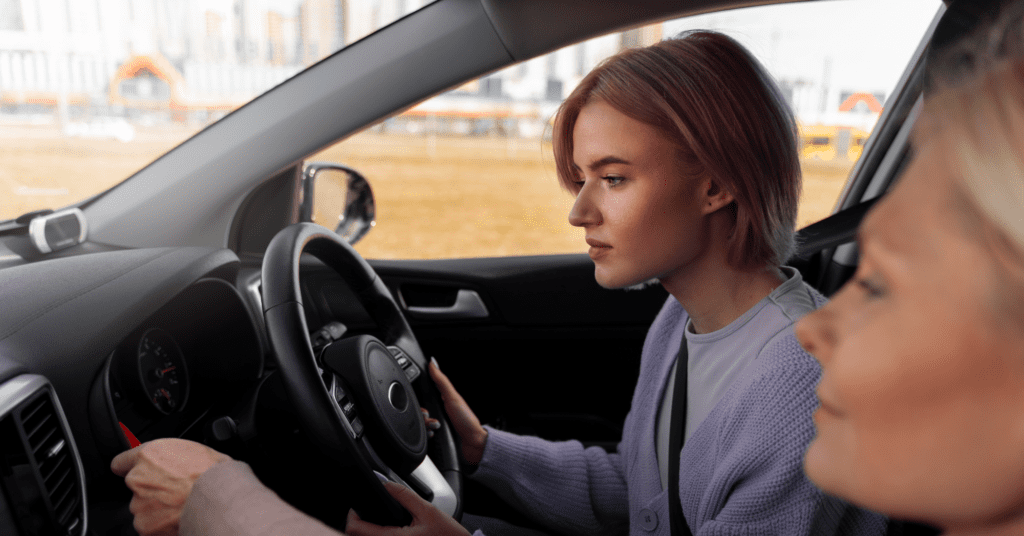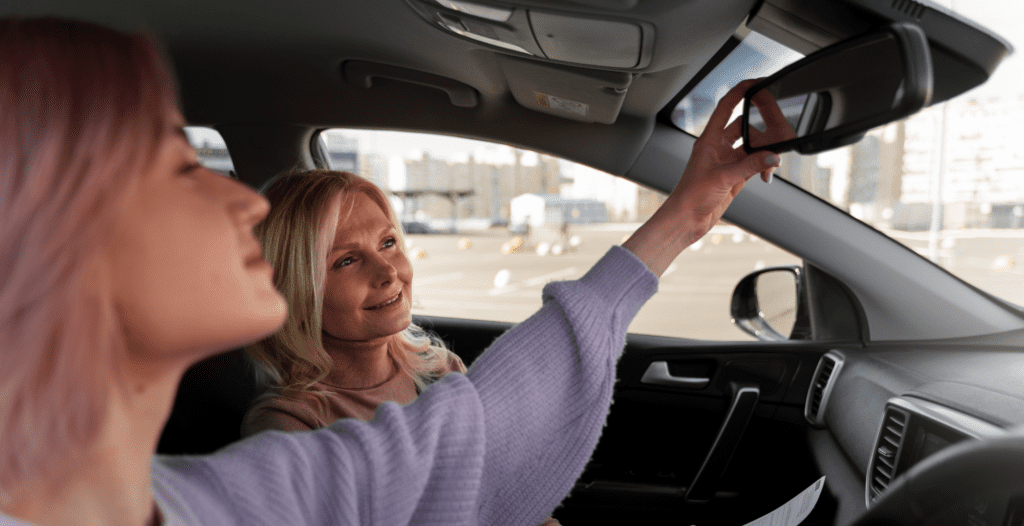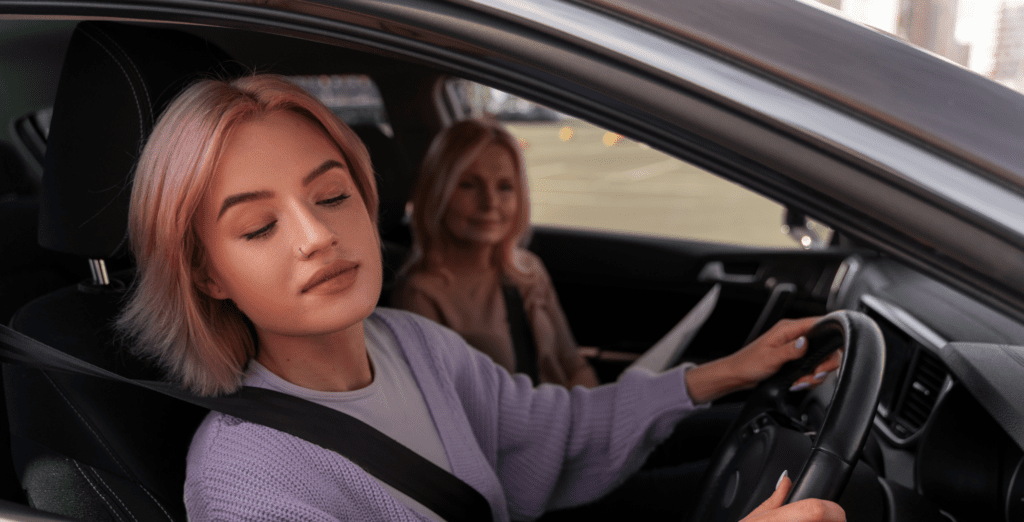
Introduction to Automatic vs. Manual Driving Lessons
Overview of Automatic and Manual Cars
When choosing to learn how to drive, one of the first decisions a learner driver in the UK must make is whether to learn in an automatic or a manual car.
The main difference lies in the gearbox configuration: automatic cars switch gears automatically as the car moves, while manual cars require the driver to manually select the correct gear using a clutch pedal and a gear stick.

Key Differences Between Automatic and Manual Transmissions
- Automatic transmissions are often considered easier to learn because they require less multitasking. Drivers do not need to worry about clutch control or stalling the car, which can make driving less stressful, particularly in heavy traffic or on steep hills.
- In contrast, manual transmissions offer the driver more control over the car, which can be particularly useful in conditions that require a specific gear, such as icy roads or dynamic driving scenarios.
Learning to drive a manual car also means you are qualified to drive an automatic, whereas if you learn in an automatic, you are restricted to driving automatics unless you pass a separate manual car test.
Current Trends in Driving Lesson Preferences
In recent years, there has been a shift towards automatic cars in the UK. This trend is driven by the increasing availability of hybrid and electric cars, which are predominantly automatic, and the general ease of driving automatics.
Consequently, this shift is reflected in learner drivers’ preferences, with more opting for automatic lessons due to the perceived simplicity and future-proofing of their driving skills.
Cost Comparison of Automatic vs. Manual Lessons
Average Cost Per Lesson for Automatic vs. Manual
Typically, automatic driving lessons are more expensive than manual lessons. This price difference can be attributed to several factors.
Firstly, automatic cars generally cost more to purchase and maintain. Additionally, the higher demand for automatic lessons combined with a relative scarcity of automatic driving instructors can lead to higher prices.
On average, the cost of an automatic driving lesson can be between £2 to £5 more than a manual lesson.

Variability in Costs by Region and Instructor
The cost of driving lessons can vary significantly across different regions of the UK. Generally, urban areas, particularly in London and the South East, tend to have higher lesson rates due to higher living costs.
Conversely, in more rural areas or regions with lower living costs, lesson prices may be more affordable.
Furthermore, individual driving instructors may also set different prices based on their experience, the car model used for teaching, and other business costs.
Analysis of Lesson Packages and Offers
Many driving schools and independent instructors offer lesson packages or discounts for block bookings, which can influence the overall cost effectiveness of choosing manual or automatic lessons.
While automatic lessons are typically more expensive on a per-lesson basis, purchasing a package deal can sometimes offset this higher cost.
It is advisable for learner drivers to research and compare package deals offered by local driving schools in both manual and automatic categories to find the most cost-effective option.
Number of Lessons Required: Automatic vs. Manual
Average Number of Lessons to Test Readiness
The average number of lessons required to reach test readiness can differ notably between automatic and manual transmission learners.
Typically, learners in automatic cars may require fewer lessons because they are not dealing with clutch control or gear selection, which are complex skills that can extend the learning period in manual cars.
On average, it’s estimated that learners in automatic cars might be ready for their test after 20 to 30 hours of tuition, whereas manual car learners might need anywhere from 25 to 40 hours, depending on individual aptitude and learning speed.

Learning Curve and Progression in Automatic vs. Manual
The learning curve in automatic cars is generally smoother than in manual cars. The absence of a clutch pedal and the need to manually change gears allows the learner to focus more on road awareness, steering techniques, and speed management.
In contrast, learners in manual cars must also master clutch control—a skill that requires significant coordination and timing, particularly when starting the vehicle and changing gears.
This additional complexity can slow initial progress but may provide a more comprehensive understanding of car mechanics.
Impact of Transmission Type on Learning Speed
The type of transmission has a direct impact on learning speed. Automatic transmissions simplify the driving process, potentially allowing learners to progress faster in other areas of driving competency, such as navigating complex traffic situations or perfecting parking skills.
However, this simplified driving experience might lack the manual skills required by those who later decide to drive manual cars, necessitating additional lessons and testing.
Long-Term Cost Implications
Vehicle Maintenance and Fuel Efficiency
From a maintenance perspective, automatic cars used to be less fuel-efficient than their manual counterparts, but advances in technology have greatly reduced this gap.
Modern automatic transmissions are often as efficient, if not more so, than manuals. However, when it comes to maintenance, automatics can be more expensive to repair due to their complex machinery.
The higher complexity of automatic gearboxes often leads to more costly repairs if issues arise compared to manual transmissions.
Resale Value of Automatic vs. Manual Cars
The resale value of automatic cars versus manual cars can vary depending on market demand. In the UK, the growing preference for automatics has strengthened their resale value.

Automatics tend to retain their value better over time, particularly as the market shifts towards electric and hybrid vehicles, which are predominantly automatic.
This is an important consideration for learners who plan to purchase a car after passing their driving test.
Insurance Costs for Automatic vs. Manual Cars
Insurance costs can also differ between automatic and manual cars. Typically, automatic cars are more expensive to insure.
This can be attributed to their higher purchase price, more costly repair charges, and the perception that they might be driven by those who prefer less complex driving, such as older or less experienced drivers.
Learner drivers should consider these factors when estimating the long-term costs of owning and operating a car post-licensing.
Benefits of Choosing Automatic Driving Lessons
Easier Learning Process
One of the key benefits of opting for automatic driving lessons is the easier learning process.
Automatic vehicles eliminate the need to master clutch control and gear changes, allowing learner drivers to focus more on other driving skills such as steering, observing road signs, and managing spatial awareness.
This simplification can lead to a quicker initial progression and less cognitive overload, particularly beneficial for those who may find the physical coordination of manual driving challenging.

Reduced Test Anxiety and Error Rate
Learning to drive in an automatic car can significantly reduce test anxiety and the error rate during the driving test.
The driving test environment can be stressful, and removing the possibility of stalling or making gear-change errors can ease a learner’s nerves.
Automatic cars provide a smoother experience, and learners often feel more confident when they are not worried about manual controls, which can directly reduce the incidence of critical errors under test conditions.
Increased Focus on Road Safety Instead of Gear Changes
With the physical task of changing gears out of the equation, automatic lessons give learners the ability to increase their focus on road safety.
This heightened awareness can lead to better decision-making on the road, as learners can dedicate more attention to road signs, other road users, and various driving conditions.
This not only makes them safer drivers but also enhances their ability to handle complex driving situations more effectively.
Making the Right Choice for You
Assessing Your Driving Needs and Preferences
When deciding between automatic and manual lessons, it’s crucial to assess your driving needs and preferences.
Consider what type of vehicle you see yourself driving in the future, as well as your current level of comfort with multitasking and physical coordination.
If you plan to drive primarily in urban areas with heavy traffic, an automatic may be more convenient.
Alternatively, if you enjoy more control over the vehicle and possibly intend to drive in varied conditions or outside the UK, where manual cars are more prevalent, learning in a manual could be beneficial.

Considerations Beyond Cost
While the cost of lessons is an important factor, there are other considerations beyond cost that should influence your decision.
Think about long-term convenience, the likelihood of driving different types of vehicles in the future, and what skills you want to gain from your driving experience.
The choice between automatic and manual can affect not just your learning phase but also your entire driving career.
Consulting with Driving Instructors for Personalised Advice
Finally, consulting with driving instructors can provide personalised advice tailored to your specific circumstances.
Experienced instructors can offer insights based on observing your driving style, confidence levels, and learning speed.
They can help you understand the pros and cons of each type of transmission in the context of your individual needs and goals, making it easier to make an informed decision about which path to choose in your driving education.
Frequently asked questions
The duration varies by individual, but typically, learners take between 40 to 50 hours of professional driving lessons along with additional private practice before they are ready to take the practical driving test.
Yes, you can choose to learn in an automatic car. This is often considered easier as it does not require managing the clutch or gear changes.
However, be aware that passing your test in an automatic car restricts you to driving automatic vehicles only.
Learning in a manual car allows you to drive both manual and automatic vehicles. Additionally, manual cars often have better fuel efficiency and are typically cheaper to buy and maintain.
You can apply for a provisional driving licence online at the DVLA website or by completing a D1 application form available from most Post Offices. You must be at least 15 years and 9 months old to apply.
You should bring your provisional driving licence. It’s also recommended to wear comfortable, non-slip shoes and to bring glasses if you need them for driving.
The cost of driving lessons varies across the UK, generally ranging from £25 to £50 per hour. Prices may be higher in larger cities, particularly London.
You need to score at least 43 out of 50 in the multiple-choice section and 44 out of 75 in the hazard perception section to pass the UK theory test.
You can book your theory test online via the DVSA’s official website or by telephone. The cost of the test is set nationally and you will need your provisional driving licence number to book.
If you fail your driving test, you can take it again after 10 working days. It’s a good idea to discuss any mistakes you made with your instructor so you can work on improving these areas before retaking the test.


